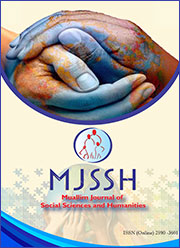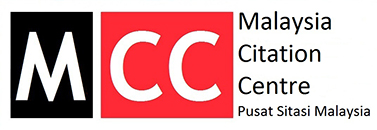Impact of kineasthetic gamification on disruptive behaviour among children with attention deficit disorder/attention deficit hyperactive disorder (ADD/ADHD) in primary school learning disabilities programme
KESAN KG (KINEASTHETIC, GAMIFICATION) TERHADAP TINGKAH LAKU DISRUPTIF DALAM KALANGAN KANAK-KANAK (ADD/ADHD) SEKOLAH RENDAH MASALAH PEMBELAJARAN
Keywords:
Pergerakan gamifikasi, Tingka laku disruptif, ADD/ADHD, Gamification movement, Disruptive behaviourAbstract
Kajian ini bertujuan meninjau samaada pergerakan gamifikasi atau kinaesthetic gamification (KG) boleh bantu mengurangkan masalah tingkah laku disruptif dalam kalangan kanak-kanak masalah pembelajaran (ADD/ADHD) sekolah rendah. Kajian berbentuk kuantitatif menggunakan kaedah tinjauan melalui soal selidik, temu bual dan pemerhatian dijalankan di Perak, Selangor dan Melaka. Persampelan bertujuan (purposive sampling) terdiri daripada 30 orang murid ADHD dan 30 orang guru pendidikan khas. Instrumen kajian terdiri daripada dua set soal selidik (murid ADHD dan guru), jadual pemerhatian dan temu bual berstruktur. KG ditadbir selama empat minggu. Dapatan kajian menunjukkan guru menangani masalah tingkah laku disruptif melalui pensyoran ubat-ubatan oleh ibu bapa murid dan pemberian token ekonomi. Hasil dapatan melalui pemerhatian menunjukkan tingkah laku disruptif berkurangan selepas menerima intervensi. Walau bagaimanapun, hasil analisis korelasi Pearson menunjukkan tidak terdapat hubungan signifikan antara emosi dengan masalah tingkah laku disruptif. Kesimpulannya, penggunaan teknik KG bagi mengurangkan masalah tingkah laku disruptif dalam kalangan murid di sekolah rendah yang mengalami masalah ADD/ADHD boleh dipertimbangkan oleh guru.
[The aim of this research is to find out if gamification movement or kinaesthetic gamification (KG) can help to reduce disruptive behaviour among children with learning disabilities with ADD/ADHD in primary school. Quantitative research approach using survey method through questionnaire instrument, interview and observation was conducted in Perak, Selangor and Malacca. A purposive sampling of 30 pupils with ADHD and 30 special education teachers were involved. The instrument consisted of two sets of questionnaire (for pupils with ADHD and teachers), observation schedule and structured interview. KG was administered for four weeks. Findings indicated teachers are able to overcome disruptive behaviour as pupils take medication and teachers use token economy. Observational findings indicated disruptive behaviour reduced after receiving KG intervention. However, Pearson correlation analysis indicated no significance between emotion and disruptive behaviour. In conclusion, using KG technique to reduce disruptive behaviour among pupils in primary school with ADD/ADHD can be considered by teachers.]
References
Kebbi, M., & Al-Hroub, A. (2018). Stress and coping strategies used by special education and general classroom teachers. International Journal of Special Education, 33(1), 34–61.
Abdul Hameed, A. M., Siti Hawa, H., Ruziah, M. Z., Amar Shobha, S., Lye, G. P., Chang, K. S., & Mahadi, S. (2014). Classroom management practices - Observations in selected Malaysian classrooms. IOSR Journal Of Humanities And Social Science (IOSR-JHSS), 19(11), 54–58.
Manisah, M. A., Rozila, A., & Rosadah, A. M. (2014). Teacher trainees’ strategies for managing the behaviours of students with special needs. International Education Studies, 7(13), 271–277. https://doi.org/10.5539/ies.v7n13p271
Hoseini, B. L., Abbasi, M. A., Moghaddam, H. T., Khademi, G., & Saeidi, M. (2014). Attention deficit hyperactivity disorder (ADHD) in children: A short review and literature. International Journal of Pediatrics, 2(12), 445–452. https://doi.org/10.22038/ijp.2014.3749
Said, Z., Huzair, H., Helal, M. N., & Mushtaq, I. (2015). Attention deficit hyperactivity disorder (ADHD) in children and adolescents. Progress in Neurology and Psychiatry, 19(3), 16–23.
Thomas, R., Sanders, S., Doust, J., Beller, E., & Glasziou, P. (2015). Prevalence of attention-deficit/hyperactivity disorder: A systematic review and meta-analysis. Pediatrics, 135(4), e994–e1001. https://doi.org/10.1542/peds.2014-3482
Powell, L., Parker, J., & Harpin, V. (2017). What is the level of evidence for the use of currently available technologies in facilitating the self-management of difficulties associated with ADHD in children and young people? A systematic review. European Child and Adolescent Psychiatry, 1–22. https://doi.org/10.1007/s00787-017-1092-x
Saad, S., & Lindsay, G. (2010). Preschool children with attention deficit hyperactivity disorder (ADHD) in inclusive settings: Challenging but not problematic. Pertanika Journal of Social Science and Humanities, 18(1), 115–132. Retrieved from https://www.scopus.com/inward/record.uri?eid=2-s2.0-77952173333&partnerID=40&md5=c3d7d75602cd4880fe9052dbfa1629d1
Biirah, J., Anika, A., & Zigler, R. S. (2018). Influence of teacher factors on academic achievement of learners with attention-deficit hyperactivity disorder (ADHD) in international primary schools of Mombasa (Kenya) and Kampala (Uganda): A comparative study. European Journal of Special Education Research, 3(4), 232–243. https://doi.org/10.19044/esj.2018.v14n29p199
Golubović, S., Milutinović, D., & Golubović, B. (2014). Benefits of physical exercises in developing certain fitness levels in children with hyperactivity. Journal of Psychiatric and Mental Health Nursing, 21(7), 594–600. https://doi.org/10.1111/jpm.12091
Wilcox, J. (2017). ADHD in elementary school students: Impact of physical activity on ADHD symptoms. Minnesota State University, Mankato. Retrieved from http://cornerstone.lib.mnsu.edu/etdshttp://cornerstone.lib.mnsu.edu/etds/706
Suarez-Manzano, S., Ruiz-Ariza, A., López-Serrano, S., & Martínez Lopez, E. J. (2017). Acute effect of physical exercise on the impulsivity and state of anxiety, in 6-12 years school children with attention deficit and hyperactivity disorder: Systematic review. MLS Educational Research, 1(1), 39–52. https://doi.org/10.29314/mlser.v1i1.21
Cornelius, C., Fedewa, A. L., & Ahn, S. (2017). The effect of physical activity on children with ADHD: A quantitative review of the literature. Journal of Applied School Psychology, 33(2), 136–170. https://doi.org/10.1080/15377903.2016.1265622
Almarshedi, A., Wanick, V., & Wills, G. B. (2017). Gamification and Behaviour. In Gamification (pp. 19–30). https://doi.org/10.1007/978-3-319-45557-0
Bul, K. C. M., Franken, I. H. A., Van der Oord, S., Kato, P. M., Danckaerts, M., Vreeke, L. J., … Maras, A. (2015). Development and User Satisfaction of “Plan-It Commander,” a Serious Game for Children with ADHD. Games for Health Journal, 4(6), 502–512. https://doi.org/10.1089/g4h.2015.0021
Retalis, S., Korpa, T., Skaloumpakas, C., Boloudakis, M., Kourakli, M., Altanis, I., … Pervanidou, P. (2014). Empowering children with ADHD learning disabilities with the kinems kinect learning games. In 8th European Conference on Games Based Learning (pp. 469–477).
Published
 Abstract Display: 1558
Abstract Display: 1558  PDF Downloads: 1113
PDF Downloads: 1113 













 This work is licensed under a
This work is licensed under a